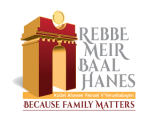Shedding Light on the Time-Proven Rebbi Meir Segulah

Rabbi Meir Baal Haness Segulah: The Custom Shared Across the World…
In the early 1700’s, a young scholar from Eretz Yisrael whose Torah works would find a home in virtually every Jewish community across the world set forth on a voyage that would take him from North Africa to the heartlands of Germany. This young Rav – already an accomplished mekubal – crisscrossed across Europe, raising funds for the poor of the Holy Land. This would not be his only journey: he would set out once more on the same mission later in the century.
The travel diary that he kept tells of the Torah giants he encountered, the learning he acquired, and the rare sefarim he discovered – and took notes on — in libraries all along his way. But his journal also paints a vivid picture of the kehillos he visited, all of which differed in custom, dress, and the challenges they faced. One minhag, however, he testified was shared by every place: the practice to donate money or oil (for illumination of shuls) in the merit of R’ Meir Baal Hanes in any time of distress.
So wrote Rabbi Chayyim Yosef David Azulai, better known by the acronym of his name as the Chida. But Rabbi Eliyahu HaKohen of Izmir, whose beloved ethical work the Shevet Mussar was printed numerous times in the same century, wrote similarly: when one has lost an object, the prayer for lost items which invokes the name and merit of Rabbi Meir will help with its retrieval if said immediately.
…And Across Time
Today, 300 years later, the Rabbi Meir Baal Haness Segulah for lost objects still remains firmly rooted in Klal Yisrael. The prayer for missing items that beseeches “G-d of Meir, answer me!” can be found on refrigerator magnets worldwide and online as well; Google fields innumerable daily searches for “Rabbi Meir Baal Haness donate” or “Reb Meir Baal Hanes donate”.
Representatives of the kupah of Rabbi Meir – the organization that disburses funds contributed by people who recited the prayer for lost objects – receive calls on a constant basis requesting the words to the Rabbi Meir Baal Haness prayer for lost objects.
However, the essence of the segulah for lost items remains unchanged: combining heartfelt prayer with charitable giving creates a powerful spiritual connection that has stood the test of time across continents and generations.

